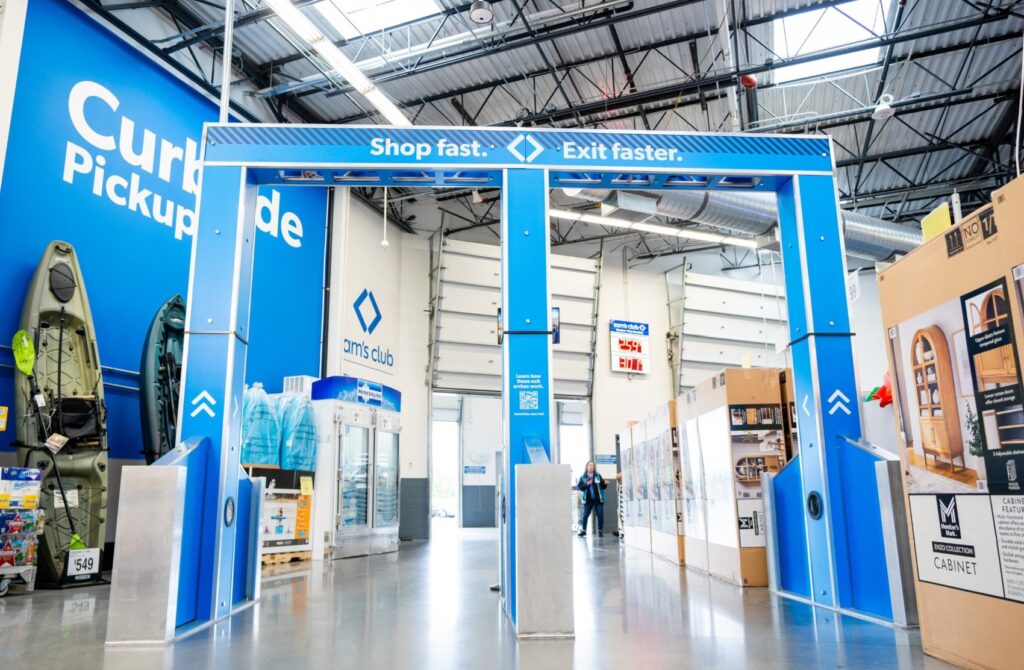How the Sam’s Club CTO used computer vision and AI to transform the member exit experience

In theory, every consumer-facing business technology decision should be about improving the customer experience. When it comes to Sam’s Club, the members-only, discount food warehouse owned by Walmart, they wanted to find a way to improve the store exit experience using cameras, computer vision and AI.
Prior to implementing that AI-fueled solution, the customer would pay, then head for the exit where an associate would typically stop the shopper on the way out, scan their receipt and scan perhaps three or four items in the cart. If everything matched, the customer would head out of the store.
“We started getting a lot of feedback from our members that the exit process is a pain point,” Sam’s Club CTO Sanjay Radhakrishnan told FastForward. “Because you typically have to wait in some kind of a line when the club is crowded, that line gets a little deeper, and that's a point of friction, and we started hearing that as a recurring theme in our member feedback."
Radhakrishnan challenged his team to come up with a technological solution, one that could allow customers to get out of the store faster, while still ensuring that all items in shoppers’ baskets had been paid for.
Building from existing tech or starting from scratch
We often hear how tech can improve people’s lives, and Sam’s Club wanted to put that idea into action when they started looking at a solution to the exit congestion problem. Radhakrishnan says his team’s job is to look at how they can solve a particular problem using technology.
Being part of a larger organization like Walmart, they first checked to see if someone else had come up with a solution already that they could adapt for the exit congestion issue. “We approach it by looking at what member problem or pain point are we trying to solve, and if a different business segment has already solved that, we absolutely look to see how we can leverage that and accelerate the delivery of that capability to members,” Radhakrishnan said.

But existing Walmart solutions couldn't address this specific problem. While Walmart occasionally checks shopper receipts as they exit the store, Sam's Club's membership warehouse format requires systematic cart verification for every shopper, creating bottlenecks unique to their business model. With no existing solution to leverage, Radhakrishnan put his team to work developing a custom solution.
Surfing on the cutting edge
Sam’s Club is a practitioner of “design thinking,” which the Interactive Design Foundation defines as, “a non-linear, iterative process that teams use to understand users, challenge assumptions, redefine problems and create innovative solutions to prototype and test.”
In the case of Sam’s Club design thinking approach, Radhakrishnan’s team has a lab environment where they can iterate on different solutions and see what works best in practice. If the problem was related to congestion, the solution they came up with needed to be fast with low latency. “So we did a lot of testing and trying things out. Typically with computer vision models, quality matters, the ability to process things fast matters,” he said.
“So learning, iterating, trying out and testing different models, testing different GPU servers, testing what needs to be on the edge versus what needs to be in the cloud. So it was an iterative process,” he said.
The solution they came up with uses a combination of cameras and computer vision to identify the items in the cart and compare them against the receipt from the point of sale, whether that came via a cashier or self-checkout.
“There are a couple of arches, and as you walk under an arch, there are cameras all over it with multiple cameras on the top and on the side of those trusses that are actually simultaneously taking images of the cart as you push it and walk under that archway,” Radhakrishnan said.

“Our computer models are then kicking in, and we are looking for features like size, shape, color, brand, logo, etc, and cross referencing that with our inventory catalog to identify items. Once we identify the items in the cart, then additional algorithms kick in, where we are looking at receipts from our point of sale systems, and we are trying to match a receipt with the items in the cart,” he said.
Improving the customer experience
If the system identifies anything that hasn’t been paid for, for whatever reason, then an associate will approach the shopper. If there aren’t any issues, the shopper can just walk out. He says the key to the success of the system has been the speed. “What's beautiful about this is that all of this processing happens in real time. So we have computer vision inferencing models that run on edge GPU servers. It's processing multiple 4k video streams and processing all of this in real time,” Radhakrishnan said.
What's beautiful about this is that all of this processing happens in real time. So we have computer vision inferencing models that run on edge GPU servers. It's processing multiple 4k video streams and processing all of this in real time.
For those who are concerned about privacy with the widespread use of camera technology to drive the solution, he says, “We don't do any facial recognition. We don't do any biometrics, so we don't look at any human characteristics to identify members. The sole purpose of this is to identify items in a cart or items that are being held in a member's hands.”
As for the associates who had previously served as cart checkers at the door, he says that they have been repurposed to be helpers. “Because of some of these technologies that we are enabling in the clubs, it frees up our associates that are in the club from kind of repetitive and mundane tasks, and it frees them up to be able to spend quality time with the members that actually need their help."
In terms of overall coverage, the system has been rolled out at all 600 Sam’s stores. The initial solution was launched at CES in January 2024, and was piloted in 120 stores for starters before being deployed in the remaining stores throughout the rest of the year. The company reports that shoppers exit 23% faster than with the manual exiting system with over 75% exiting without being stopped. Shopper satisfaction around exit speed is 84%.
“We don't do tech for tech's sake, right? I mean, it's really about what is the business problem and the business outcome we are going after, and what is the member pain point that we are trying to solve,” he said.
Featured photo courtesy of Sam's Club





